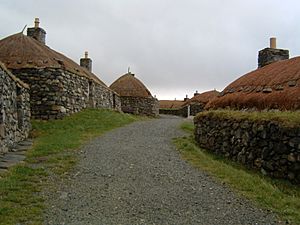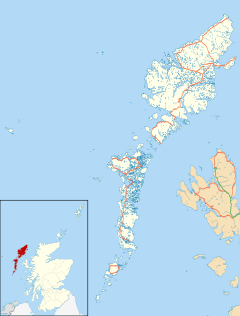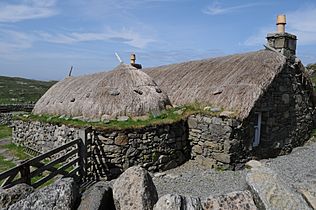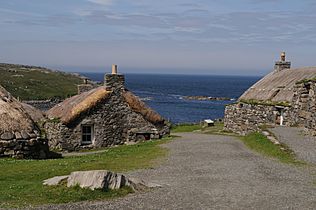Garenin facts for kids
Quick facts for kids Garenin
|
|
|---|---|
 Garenin Blackhouse Village |
|
| Language | Scottish Gaelic English |
| OS grid reference | NB192441 |
| Civil parish | |
| Council area | |
| Lieutenancy area | |
| Country | Scotland |
| Sovereign state | United Kingdom |
| Post town | ISLE OF LEWIS |
| Postcode district | HS2 |
| Dialling code | 01851 |
| Police | Northern |
| Fire | Highlands and Islands |
| Ambulance | Scottish |
| EU Parliament | Scotland |
| UK Parliament |
|
| Scottish Parliament |
|
Garenin (called Na Gearrannan in Scottish Gaelic) is a small village on the west coast of the Isle of Lewis in Scotland. It is part of the Outer Hebrides. Garenin is known for its special "blackhouse village." These are old, traditional cottages with thick walls and thatched roofs.
The village is home to about 80 people. It is a crofting township. This means people here traditionally live on and work small farms. Garenin is a unique place to learn about how people used to live a long time ago.
The Famous Blackhouses
Garenin is most famous for its nine restored blackhouses. These are traditional homes that were lived in until 1974. They were the very last group of blackhouses where people lived in the Western Isles. Imagine living without running water! Piped water only arrived in the village in the 1960s.
These special houses are found at the end of the Garenin road. They sit right beside the village bay.
Bringing the Village Back to Life
In 1989, a group called Urras nan Geàrrannan (The Garenin Trust) was formed. Their goal was to restore the old blackhouses. It took over ten years to complete this big project.
On June 5, 2001, the restored village was officially opened. Princess Anne herself came to celebrate this important event.
What to See and Do Today
Today, Gearrannan Village Ltd. manages the village. You can still visit and explore this historic place.
- Stay in a Cottage: There are four self-catering cottages where visitors can stay.
- Visit the Museum: One blackhouse has been turned into a museum. It shows what life was like in 1955. This was just three years after electricity came to the island.
- Learn More: There is also a resource centre where you can find out more about the village.
- Grab a Bite: During the summer, you can enjoy a café and a small gift shop.
A youth hostel used to be in the village, opening in 1991. However, it closed in May 2011.
Gallery





